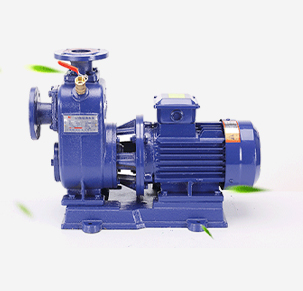English
- Afrikaans
- Albanian
- Amharic
- Arabic
- Armenian
- Azerbaijani
- Basque
- Belarusian
- Bengali
- Bosnian
- Bulgarian
- Catalan
- Cebuano
- Corsican
- Croatian
- Czech
- Danish
- Dutch
- English
- Esperanto
- Estonian
- Finnish
- French
- Frisian
- Galician
- Georgian
- German
- Greek
- Gujarati
- Haitian Creole
- hausa
- hawaiian
- Hebrew
- Hindi
- Miao
- Hungarian
- Icelandic
- igbo
- Indonesian
- irish
- Italian
- Japanese
- Javanese
- Kannada
- kazakh
- Khmer
- Rwandese
- Korean
- Kurdish
- Kyrgyz
- Lao
- Latin
- Latvian
- Lithuanian
- Luxembourgish
- Macedonian
- Malgashi
- Malay
- Malayalam
- Maltese
- Maori
- Marathi
- Mongolian
- Myanmar
- Nepali
- Norwegian
- Norwegian
- Occitan
- Pashto
- Persian
- Polish
- Portuguese
- Punjabi
- Romanian
- Russian
- Samoan
- Scottish Gaelic
- Serbian
- Sesotho
- Shona
- Sindhi
- Sinhala
- Slovak
- Slovenian
- Somali
- Spanish
- Sundanese
- Swahili
- Swedish
- Tagalog
- Tajik
- Tamil
- Tatar
- Telugu
- Thai
- Turkish
- Turkmen
- Ukrainian
- Urdu
- Uighur
- Uzbek
- Vietnamese
- Welsh
- Bantu
- Yiddish
- Yoruba
- Zulu
Telephone: +86 13120555503
Email: frank@cypump.com
Nov . 27, 2024 01:31 Back to list
Understanding the Role of Sump Pumps in Septic System Maintenance and Functionality
Understanding Sump Pumps in Septic Systems
Septic systems are essential for managing wastewater in rural and some suburban areas. They function independently of municipal sewage systems, treating and disposing of household wastewater on-site. One critical component of many septic systems is the sump pump, which plays a vital role in ensuring their efficiency and longevity.
What is a Sump Pump?
A sump pump is a mechanical device designed to remove accumulated water from a specific area, typically a sump basin or pit. In the context of septic systems, sump pumps are utilized to manage excess water and prevent flooding in and around the septic tank and drain field. These pumps are equipped with a float switch that activates the pump when the water reaches a certain level, efficiently pumping excess water away from the system.
The Importance of Sump Pumps in Septic Systems
1. Preventing Backups One of the primary functions of a sump pump in a septic system is to prevent plumbing backups. When water accumulates in the septic tank or drainage area, it can cause overflow, leading to potential backups in the household plumbing system. A sump pump helps to manage water levels, preventing this issue.
2. Protecting the Drain Field The drain field, or leach field, is responsible for absorbing and treating effluent from the septic tank. Excess water can saturate the soil, reducing its ability to percolate and treat wastewater effectively. Sump pumps help maintain ideal moisture levels, ensuring the drain field operates as intended and preventing malfunctions.
3. Maintaining System Efficiency The overall efficiency of a septic system relies on correct water management. By removing excess water, sump pumps can help maintain the balance necessary for effective breakdown and treatment of waste materials. This ultimately extends the life of the septic system and reduces repair costs.
septic system sump pump

4. Dealing with High Water Tables In areas with high water tables or frequent heavy rainfall, sump pumps become even more crucial. These conditions can lead to significant water accumulation that can overwhelm a septic system. A sump pump ensures that the system remains functional, even in less-than-ideal conditions.
Choosing the Right Sump Pump
When selecting a sump pump for a septic system, several factors should be considered
- Pump Type There are two main types of sump pumps submersible and pedestal. Submersible pumps are sealed and can be submerged in water, making them suitable for areas with high water levels. Pedestal pumps are placed above the sump basin, making them easier to access for maintenance.
- Capacity and Power It's crucial to choose a sump pump with the appropriate capacity to manage the volume of water expected in the area. Pumps are rated by horsepower and gallon-per-minute (GPM) capacity, so it’s important to assess the water load your system will face.
- Durability and Maintenance Look for pumps made of corrosion-resistant materials, as they will be exposed to gray water. Regular maintenance checks and cleaning are essential to ensure the sump pump operates effectively over the long term.
Conclusion
Sump pumps are an integral component of a reliable septic system, ensuring proper management of excess water and preventing potential issues such as backups and drain field failure. In areas prone to heavy rains or high water tables, investing in a quality sump pump is not just smart; it’s essential for maintaining the health and efficiency of your septic system. By understanding the role of sump pumps and conducting regular maintenance, homeowners can enjoy a well-functioning septic system for years to come.
-
Horizontal Split Case Pump with GPT-4 Turbo | High Efficiency
NewsAug.01,2025
-
ISG Series Pipeline Pump - Chi Yuan Pumps | High Efficiency, Durable Design
NewsAug.01,2025
-
Advanced Flue Gas Desulfurization Pump with GPT-4 Turbo | Durable & Efficient
NewsJul.31,2025
-
ISG Series Vertical Pipeline Pump - Chi Yuan Pumps | Advanced Hydraulic Design&Durable Construction
NewsJul.31,2025
-
ISG Series Vertical Pipeline Pump - Chi Yuan Pumps | Energy Efficient & Low Noise
NewsJul.31,2025
-
pipeline pump - Chi Yuan Pumps Co., LTD.|High Efficiency&Low Noise
NewsJul.31,2025










